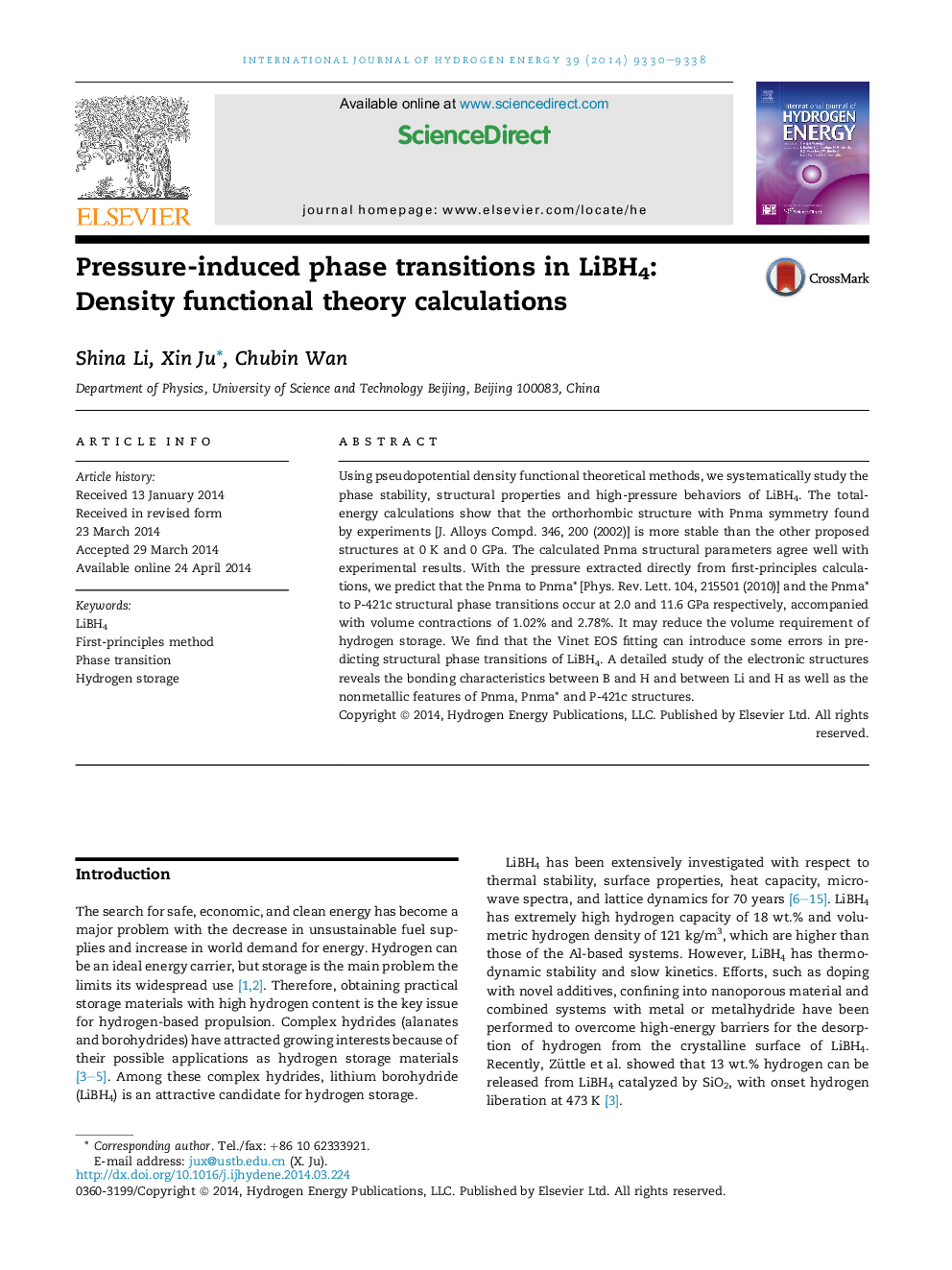| Article ID | Journal | Published Year | Pages | File Type |
|---|---|---|---|---|
| 7719098 | International Journal of Hydrogen Energy | 2014 | 9 Pages |
Abstract
Using pseudopotential density functional theoretical methods, we systematically study the phase stability, structural properties and high-pressure behaviors of LiBH4. The total-energy calculations show that the orthorhombic structure with Pnma symmetry found by experiments [J. Alloys Compd. 346, 200 (2002)] is more stable than the other proposed structures at 0Â K and 0Â GPa. The calculated Pnma structural parameters agree well with experimental results. With the pressure extracted directly from first-principles calculations, we predict that the Pnma to Pnma* [Phys. Rev. Lett. 104, 215501 (2010)] and the Pnma* to P-421c structural phase transitions occur at 2.0 and 11.6Â GPa respectively, accompanied with volume contractions of 1.02% and 2.78%. It may reduce the volume requirement of hydrogen storage. We find that the Vinet EOS fitting can introduce some errors in predicting structural phase transitions of LiBH4. A detailed study of the electronic structures reveals the bonding characteristics between B and H and between Li and H as well as the nonmetallic features of Pnma, Pnma* and P-421c structures.
Related Topics
Physical Sciences and Engineering
Chemistry
Electrochemistry
Authors
Shina Li, Xin Ju, Chubin Wan,
